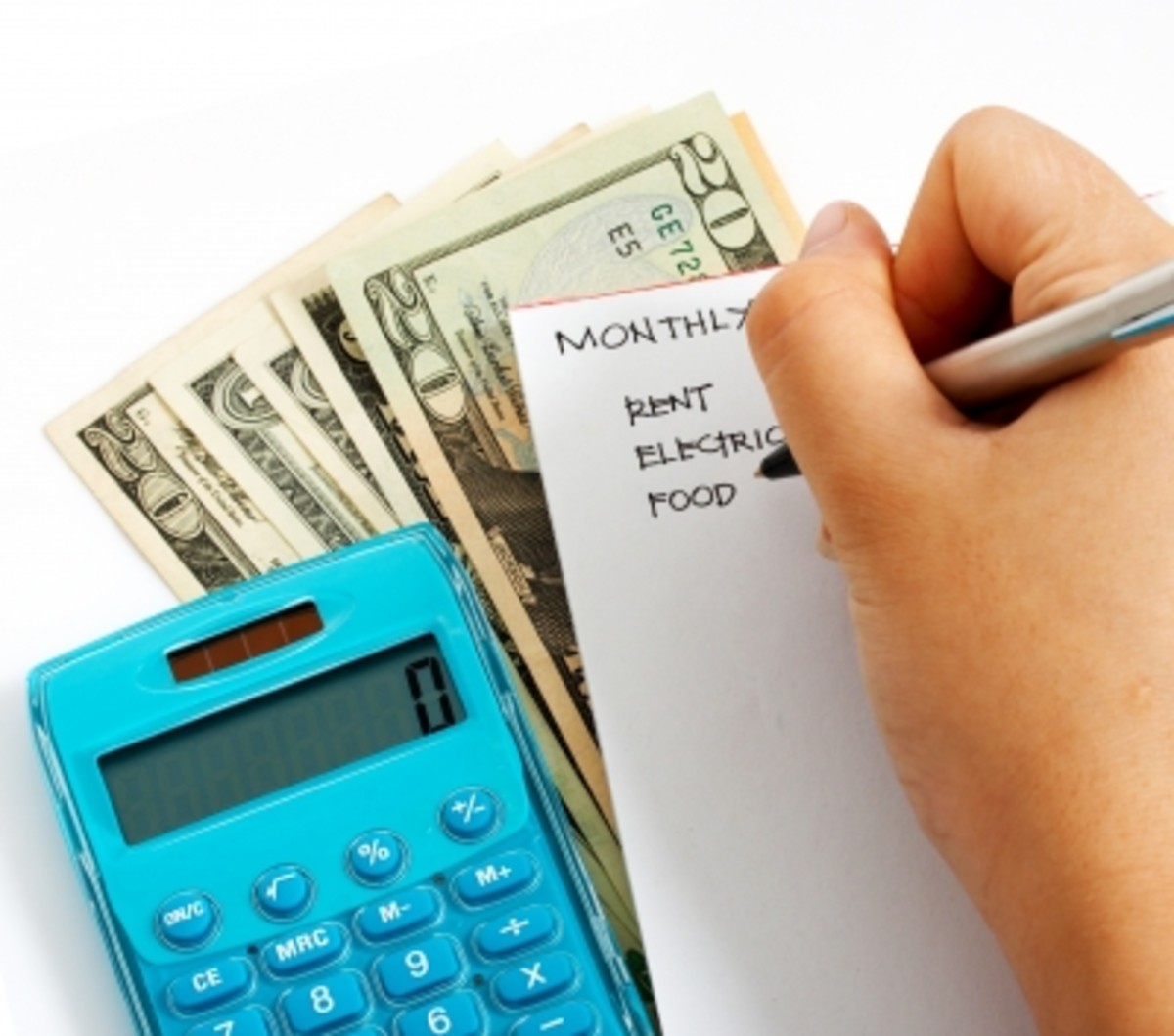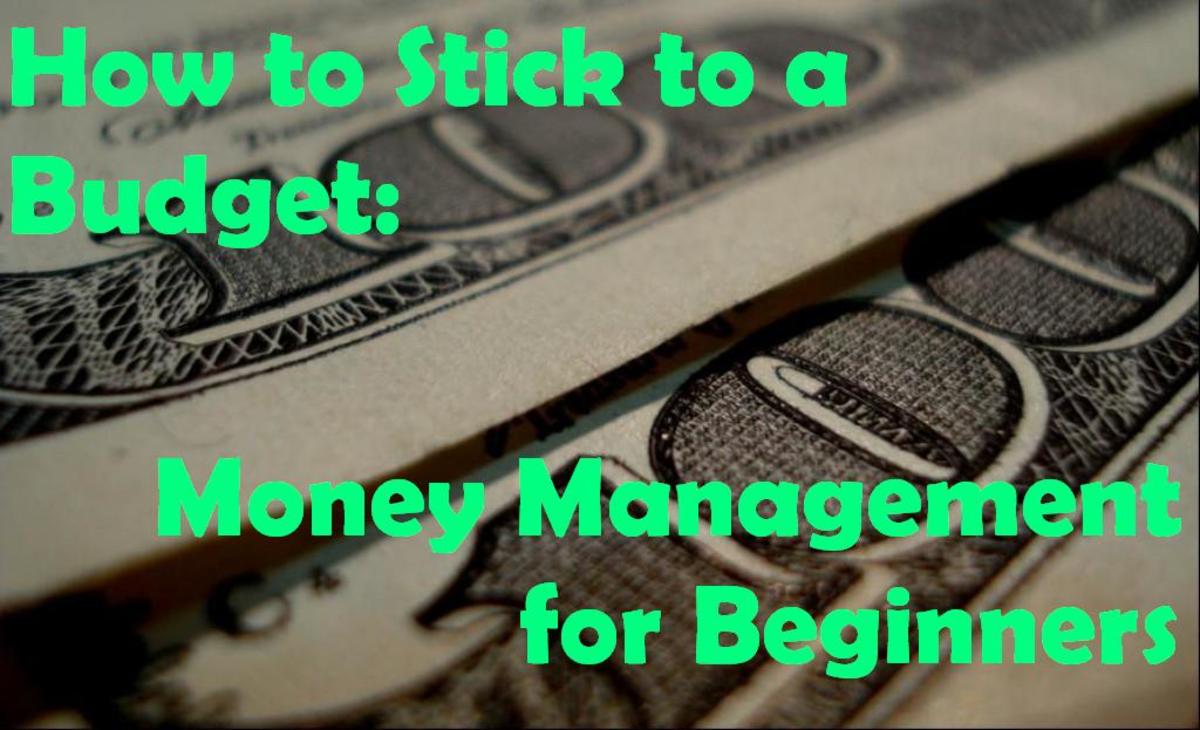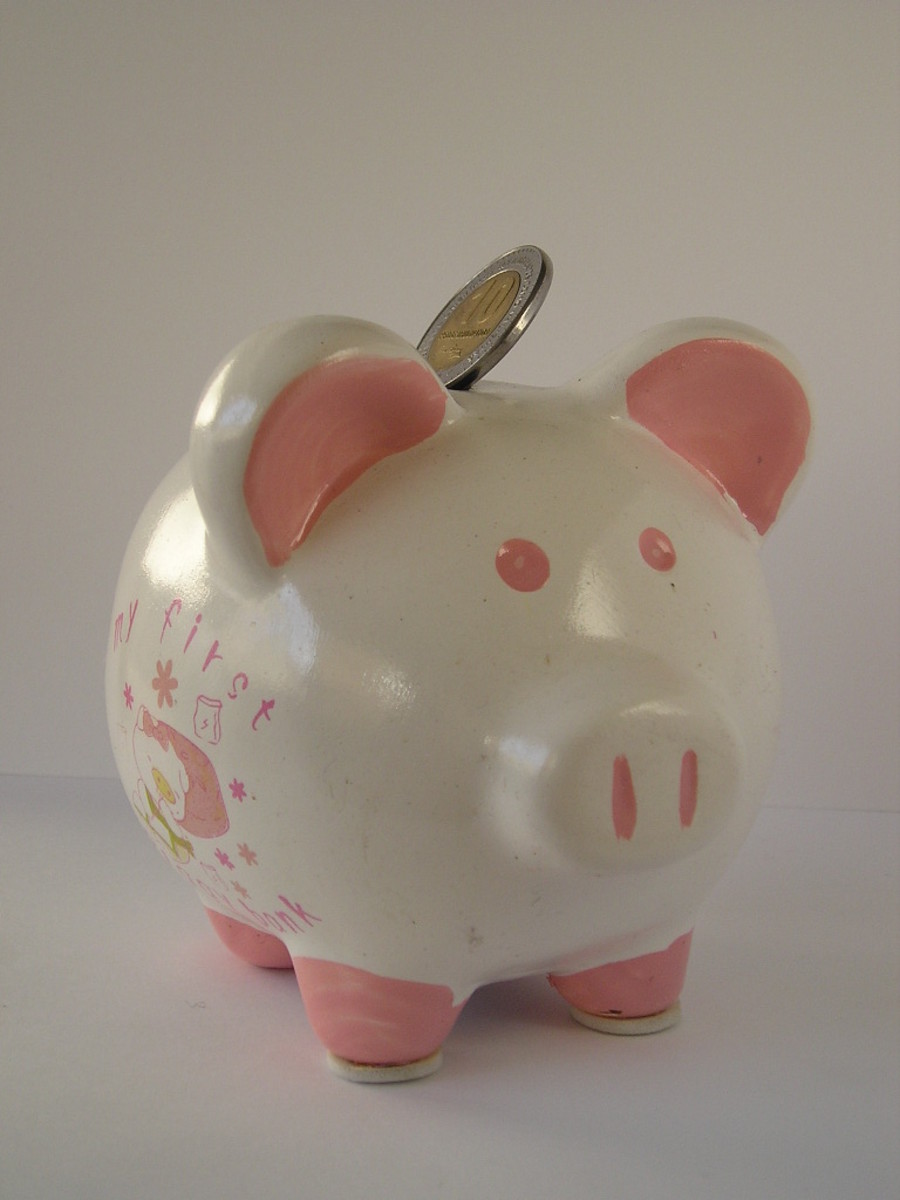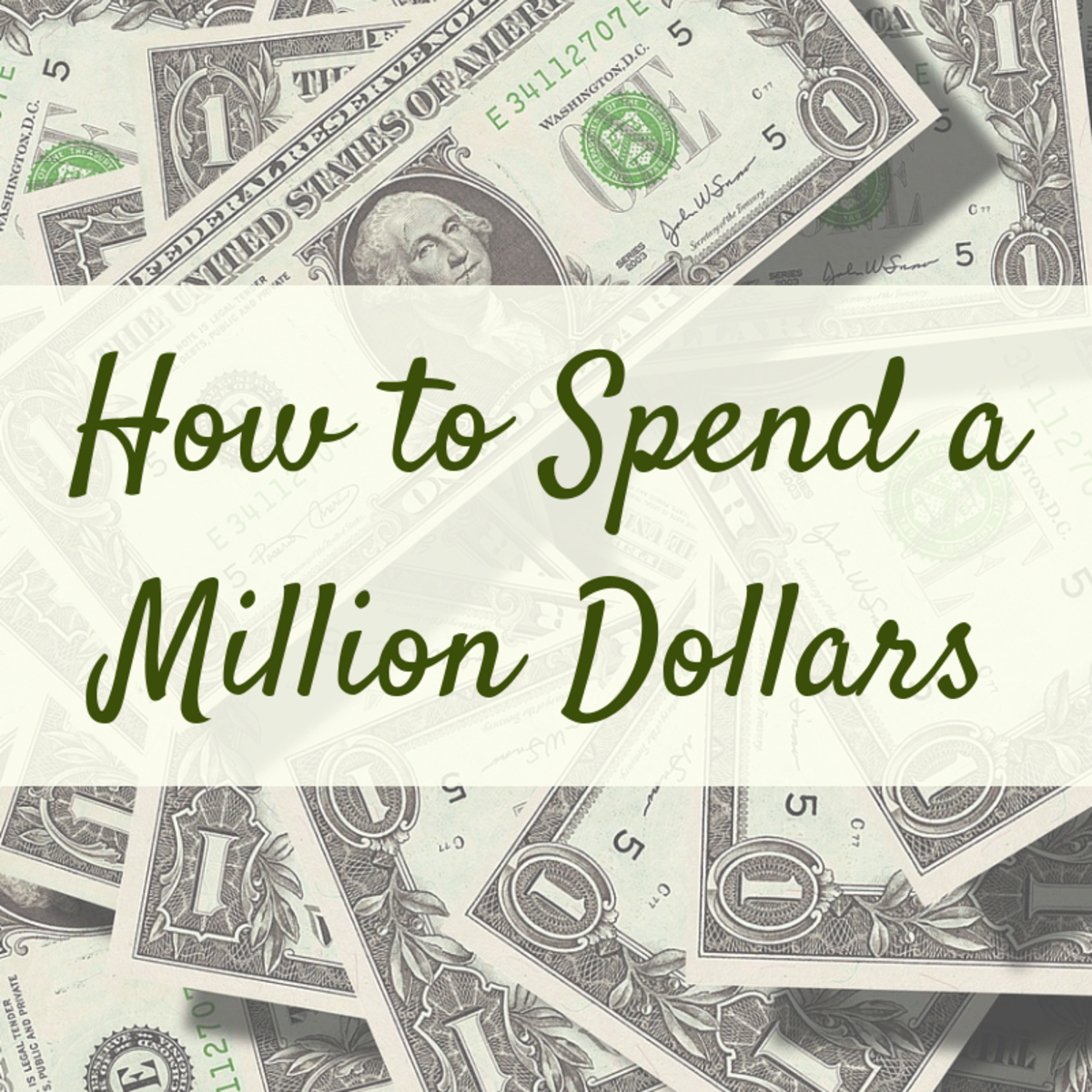Household Finances: Take Control of Your Bills [6]
SORTING IT OUT

BUDGET HELP
FIRST, YOU NEED A BUDGET
There have been thousands of articles written on this and related financial topics; as there should be for it is hugely important. Not knowing how to manage household finances has ruined countless lives and torn so many families asunder. Each article has its own approach and spin. Most are legitimate, informative, useful and written in such a way that many people pick up on use the advice to their own advantage. I hope this hub falls into that same category.
This hub isn't about how to invest your money; it is about how to get control of the money you have so that you may have some left over to invest. Getting control isn't really about numbers so much as it is about process. Of course, as every article on personal financial management will tell you, you will need a budget; this is the numbers side of the issue. It is axiomatic, no budget, no control. For this hub, however, I will assume you have a budget; you know your income and outgo. What I would like to do is introduce you to is the process of paying your bills which I believe is, if not unique, not often talked about. The heart of the process of paying your bills is something called Cash Flow.
Investment Pyramid I Hub
- Household Investment Technique I: The Personal Pyram...
This hub proposes a simple plan to follow to help maximize your investment growth while minimizing your investment risk. It relies on the proven principle of diversification. the fact that when one investment type goes up, another often goes down, an - Household Investment Technique II: The Personal Pyra...
This hub adds a twist to the original suggestion on how to distribute your resources among investment types to maximize your chances for growth while minimizing your risk. This pyramid adds in protection in case there is hyperinflation or great econo
WHAT DOES CASH FLOW HAVE TO DO WITH PAYING BILLS?
CASH FLOW IS AN ACCOUNTING TERM. AS ITS NAME IMPLIES it means to track how cash flows through a company. When and Where does cash come from and When and Where does cash go to. You can guess that tracking cash can get very complex. Nevertheless, it can be applied to home budgets without making your eyes cross. How can this be done? Mainly, because the income and outgo for most personal home finances isn't nearly as complex as even a small company.
As mentioned, there are two parts to cash flow analysis, When and Where. You might even be doing the "Where" part of cash flow analysis already if you have a budget. Basically, it is where you get your money from, wages, and where it goes, bills. It is the “When” that can cause a lot of problems even when you have more income than outgo! If you seem to always be struggling to pay your bills on time, even falling behind occasionally, when you know you should have enough money, then you may be a victim of the "When" side of the cash flow equations.
TIMING IS EVERYTHING
To illustrate what I mean by Timing let me start by relating what happened at my company in 2008. Prior to Spring 2008, the "Where" part of our cash flow was such that I could easily pay the company’s bills on time. To set the stage for what is to come, however, let summarize the "When" side of my cash flow.
Our income consists of one really big client who was billed semi-monthly. In addition, we have several medium sized and many smaller clients who we bill monthly. The companies outgo was primarily the bi-weekly payroll and paying independent contractors semi-monthly. The rest of the expenses are paid monthly. Quite a mixture on incomes and out-gos; to you it could get complex. At this point in time, the companies income was large enough and we had enough in reserve that the “When”, the Timing wasn’t an issue.
Bring on the economic meltdown. Both income and reserves shrink. At times, the reserves even disappear. Fortunately for my company and my employees, business didn't shrink so much that I couldn't pay the bills; we were still in the black. Even so, to my surprise, I was having a dickens of a time keeping current on the bills, especially payroll. I learned very quickly how to juggle and talk nice to those I owed money to.
Enter the accounting theory I was taught decades ago. I started studying up on cash flow analysis from a different perspective than I had been using it previously. Now I considered it in terms of Timing. The answer, once it came to me, is one of those head-thumper kind of things. It was so obvious once you see it, you hit yourself in your forehead with the palm of your head. Well, at least that is what I did.
The answer was, of course, to get rid of all those semi-monthly and bi-weekly and monthly for large and medium and small companies and bills and line income and outgo up. The one thing I really couldn’t change is the bi-weekly payroll. So the solution was to invoice the large and medium size companies on a bi-weekly basis and pay the independent contractors on a bi-weekly schedule as well. I didn’t change the monthly billing of the small companies in order to reduce workload and in recognition of the fact that they do not adhere to the 30-day payment cycle anyway so payments arrive randomly throughout the month anyway.
The results were amazing! Within three months, the bills were getting paid on time again, I was able to start putting money back into savings on a regular basis, and my blood pressure went down. Timing is everything!
YOU ARE A BILL TOO!

SPREAD OUT YOUR BILLS
Chances are you not in a position to control when you receive your income. You generally can’t tell your employer when you want to be paid. You can, however, decide when to when you pay your bills. Take advantage of that and make your life easier. This advice won't work in all cases, of course, but I bet you it will work in many of them. You will need the will power to overcome the inertia in getting started but once set-up, it is not hard to keep it going.
Before we start, I need to restate the primary assumption this process is based on: that is your income must exceed your "essential" expenses over time. By "essential" I mean bills you receive for your house, car, insurance, utilities, groceries, savings for retirement, savings for education, savings for purchases, savings for vacations, minor entertainment, etc. I am not talking about dining out, lots of alcohol, movies every weekend, huge cell bills, unplanned vacations, etc. (You do all of the latter when you have throw-away money, i.e., money-to-burn, and therefore don't need this advice.) If, on the other hand, your essential expenses exceed your income, I would advise seeking some professional, financial help to see how you might bring the two into balance.
Now, to the solution. I think you will see this is one of those, "why didn't I think of that” solutions. What is this magic inspiration?? simply spread out your bills to match when you receive your income. But, do it in a systematic, planned way. Put it down on paper, keep it and refer to it.
Of course, it isn’t quite that simple, but it isn’t too far off the mark. This works if you get paid once a month or once a week. If you get paid once a month, then what you do is pretty straight forward; pay all your bills when you get paid. It gets more interesting when you get paid two or more times a month. In these cases, there are a few rules you can follow.
1. Start with your biggest and/or most important bills first. I suspect this will be your mortgage or rent payment. (See my plea below regarding your mortgage). Pay this bill first, always. But don't pay it in one lump sum! Instead, pay it in as many increments as you have major income receipts in a month.
a. CAUTION: Pay it ahead of time, not after that months payment is due. For example, if your mortgage is due Nov 1, and you are going to pay it in two parts, pay the first part around Oct 15th.
b. This will start smoothing out your cash outgo to match your cash income.
c. Also, when you get in a pinch, it is normally easier to come up with 1/2 a house payment rather than whole one, which your may be more inclined to skip.
d. WRITE your mortgage or rental company to let them know what you are doing. Keep a copy for your records.
e. By the way, this is not one of those "pay down your mortgage early" schemes that you may have heard of or received spam on. They do work, but you should never pay anyone to help you do it. All it is, is paying one extra house payment a year!
2. Next, pay your retirement savings bill. If you don't have one, set one up! (More hubs to come on this.) Break this into several payments as well so it won’t seem as much at any one time and you will be less likely to skip it.
3. After that, break any other large monthly bill into parts and match them to your income.
4. Finally, work with your credit card, utility bill companies to see if you can't get them to time their invoices with whichever income stream would work for you. Otherwise, just distribute them as you see fit and pay some of them early.
It should take a few iterations before things settle down but it eventually will. One thing to watch out for is that you have a large unplanned expenditure, you will upset the applecart and make the process unstable for awhile. If the expenditure wasn't too large, isn't permanent, and isn't repeated, things will settle back down again.
Pay Your Mortgage, Please - Please, please, please do not get behind on this obligation. I have two family members that did, neither really had to but it was convenient; they never were able to get caught up and were finally foreclosed on.
AN EXAMPLE
Let's have an example to illustrate what I have been talking about. For simplicity’s sake, assume the following:
Income: $1, 500 on the 15thand $1,500 on the last day of the month.
Expenses:
- · Mortgage, $1,000/month, due on the 1st
- · Car payment, $300/month, due on the 5th
- · Utility bills, $300/month, due by the 25th
- · Groceries, $600 spread out evenly over the month
- · You save 10% or $300 on the 15th.
As you can see your budget is positive. You have $3,000 of income and only $2,500 in bills each month (yes, you should treat your savings as a bill). This, of course, is a good thing. It is, however, extremely out of balance!
In this example, you have about $600 of your bills, savings and 1/2 of your groceries, due around your paycheck on the 15th. The remaining $1,900 is due around your end of month pay; $400 more than what you receive at the end of the month!
Oh My! What to do? Well, no problem you think to yourself, along with many others, “ I will just make sure I save the missing $400 from the other paycheck. No wait. I need to hold more of the other check to live on until the next check! Darn, I wonder how much that should be ...". And so it goes. Here you are with $500 left over each month and you are already in a budgeting dilemma. It gets worse. Not only do you have to figure out how much to hold over from the mid-month paycheck, you actually have to hang on to it! Doing that is not as simple as it sounds, as you probably already know.
The solution, of course, is to move your payments around; even them out.
1. Start with your mortgage. Move 1/2 of it, $500, to the 17th. This increases your mid-month outgo to $1,100 and decreases your end-of-month to $1,400.
2. Good, but still not enough. The next move is to pay your $300 car payment on the 17th, along with your house payment. Now you are paying $1,400 mid-month and $1,100 at end-of-month. Oops.
3. To fix that, make a strategic move and slip $150 of your savings payment to the end of the month. My reasoning for this is psychological. Many people find it hard to consider paying into your retirement savings as a real bill, even though it is. This little move makes it a bit more palatable to pay yourself the 10% of your take home that you should.
So, what have we accomplished? We have leveled our payments such that $1,250 is due at about the same time you are getting paid $1,500. You now don't have to worry about having to hold enough back from the previous paycheck to make it to the next pay. Finally, you can see that you actually do have a little left over after each payday, $250 in this case. You really couldn't see this before you made the changes because extra was hidden behind the need to cover for the end of month $400 shortfall.
I would have a couple of neat charts to put in this space but I can't figure out how to paste in Excel charts. When I do, I will. What they would have shown is how the cash flows changed between the two scenarios. In the second scenario, you would have seen how your average cash-on-hand balance smoothed out and increased.
I hope this hub has been helpful. Please let me know if it has and if you would like more along these lines.
SIGN UP TO HUB PAGES AT THIS SITE AND EARN TO HELP YOUR BUDGET.
RELATED LINKS
- How to Cut Costs-The Best Ideas for Frugal Living
My father was a very frugal man. Born in 1930, he was a product of the Great Depression, and told stories of those memories; hence he never threw a thing away that could be used for future use. Growing up... - Household Investment Techniques: The Pyramid I
YOU need a plan. You need a plan. I say again. you need a plan and you need to stick to it. I bet you have seen that a million times if you have been hubbing through sites that talk about successful investing....











